How to Save the Milwaukee Bucks
A real estate partnership could build a new arena with a far lower public subsidy and more revenue for the Bucks.
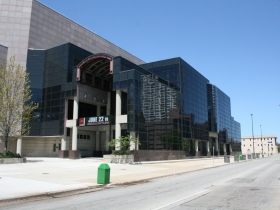
BMO Harris Bradley Center. Photo by Jeramey Jannene.
Discussions about the need to replace the Bradley Center and build a new arena for the Milwaukee Bucks have been short sighted. If the team receives a new publicly-funded arena, there would likely be a short-term boost to team revenues due to increased attendance. However, without additional revenue sources, that financial advantage will wane as the arena ages and the Bucks are likely to be in the same situation in another 30 years – asking for a new arena to remain competitive in a small market. According to Forbes, the Milwaukee Bucks have the lowest team value in the NBA. Unless the team ownership alters the mix of revenue sources, it is unlikely a new arena will substantially improve the team’s value over the long term.
I propose an alternative, which could provide Milwaukee with a unique opportunity to spark economic development downtown, build a new sustainable and diverse neighborhood, and preserve Milwaukee’s status as a major-league city. The Park East Partnership is a framework for a public private partnership that would accomplish these goals by linking development in the Park East Corridor to the construction of a new arena built largely with private funding.
By investing in the real estate that surrounds the new arena, the team’s ownership can use a portion of the profits generated by new development to replace most of the proposed public subsidy for a new arena. Any additional profits will supplement traditional team revenue from media contracts, merchandise, and venue sales – providing the franchise with a deeper and more diversified pool of revenue sources. By tying team revenue to real estate around the arena, the Park East Partnership has the added benefit of keeping the Bucks in Milwaukee for the long term, allowing current owner Herb Kohl to establish a legacy investment that will benefit the community for decades to come.
The reason for leasing the land over the first 30 years of the partnership instead of selling it outright is not to punish the private sector, but to establish a mechanism for enforcing the terms of the partnership. Too often, such as in the case of the new Barclays Center in Brooklyn, private developers make major promises to build housing and other community assets to accompany an arena but are either slow to deliver on those promises or blow off the commitment entirely. Unless a legal enforcement mechanism is in place, the community has no opportunity for recourse and must live with the results.
While the bulk of the new arena would be built with private funding, the proposed Park East Partnership would also utilize a Split Tax Increment Financing (TIF) District that would allow a portion of property tax revenue to go the city’s general fund while the rest of the TIF revenue goes to pay back bonds for the new arena. This split is especially important for the Park East because the bulk of the land is currently publicly owned and not generating any tax revenue. If traditional TIF were used, the public sector would not see any property tax revenue for the duration of the TIF district.
The Park East TIF District would encompass the project’s entire 32 acres and would not extend to currently developed land. The maximum legal life for TIF districts in Wisconsin is 27 years and the average TIF district length in the City of Milwaukee is 18 years. The Park East Proposal calls for a much shorter duration – 10 years – in order to allow full property tax revenues to flow to the general fund as soon as possible. Beginning in Year 11, all property tax revenue from the project will go to the general fund. In total, the TIF would cover less than 15 percent of the total arena cost.
Financing for the new arena at an estimated cost of $400 million would come from several sources:
-
$54 million construction bond backed by 70% of the revenue from a 10-year Split TIF District
-
$11 million construction bond backed by revenue from an Arena User Fee
-
$5.4 million in land equity from the Milwaukee Bucks
-
$111.8 million in equity from the development partner
-
$217 million private loan to be paid back with profits from private development
The private development partners would complete the development in phases and follow an urban design and master plan written in partnership with the City of Milwaukee. In order to diversify risk and keep project returns in the community, local institutional investors such as charities, foundations, and state pension funds should be brought in as investment partners. The private partners should recruit smaller developers for individual parcels in order to attract unique tenants, encourage diversity in the built environment, and build a stronger community.
In addition to social and economic benefits for Southeast Wisconsin residents, the Park East Partnership will generate significant financial returns for the City of Milwaukee, the Wisconsin Center District, the Milwaukee Bucks, and private development partners.
Financial Returns
| Public Return on Investment | |
| 30% Split TIF Revenue (City of Milwaukee) | $1.5 million in Year 1, increasing to $6 million by Year 10 |
| Development Fee (WCD) | $3 million in Year 1, increasing by 3% each year |
| Development Rights Fee in Year 1 | $32 million in Year 1 |
| Public Return on Investment | |
| Annual Arena Revenue for Milwaukee Bucks | $58.9 million in Year 1 increasing to $76.9 million in Year 10 |
| Annual Development Return for Bucks | $1.2 million in Year 1 increasing to $4.1 million in Year 10 |
| Annual Development Return for Private Development Partner | $13.8 million in Year 1 increasing to $45.2 million in Year 10 |
My recent op-ed in the Milwaukee Journal Sentinel focuses on the deficiencies of the proposal for a new arena sales tax and outlines in more detail how the Park East Partnership could create a vibrant new neighborhood, promote economic development, and generate public revenue. I certainly don’t expect this proposal to be implemented as a whole – and I don’t pretend that it’s the perfect plan or that it’s even entirely feasible. The goal of the Park East Partnership is to expand the conversation about how growth and development happens in our city by including the entire Milwaukee community in the discourse about a new arena and the future of the Park East.
As a community, we aren’t beholden to the economic development and policy tools of the past. We can and should embrace innovation – especially innovation that supports job creation and social equity. By working together, we can explore how to better use local resources, produce development that benefits the entire city, and make Southeast Wisconsin a better place to live.
Visit www.parkeastpartnership.com to learn more and download the full proposal for the Park East Partnership.
A Milwaukee native, Mike Westling is the founder of Exchange Planning and Development. Westling has a graduate degree in Economic Development and Urban Planning from the University of Michigan and previously worked for Wisconsin Governor Jim Doyle and as a press secretary in the U.S. Senate.
Op-Ed
-
Unlocking Milwaukee’s Potential Through Smart Zoning Reform
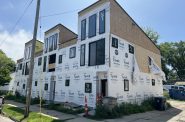 Jul 5th, 2024 by Ariam Kesete
Jul 5th, 2024 by Ariam Kesete
-
We Energies’ Natural Gas Plans Are A Mistake
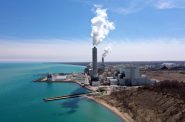 Jun 28th, 2024 by John Imes
Jun 28th, 2024 by John Imes
-
Milwaukee Needs New Kind of School Board
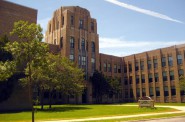 Jun 26th, 2024 by Jordan Morales
Jun 26th, 2024 by Jordan Morales



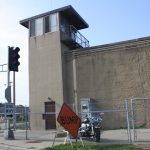

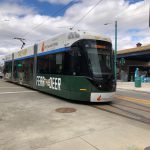


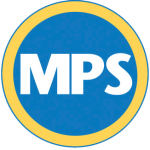
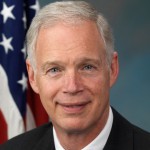
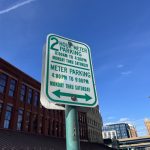








Very good article. Why can’t you guys take over JSOnline? The entire state would be better off!
Another three card monte game.
The economics of the new Sprint Arena in Downtown Kansas City may include revenue sources applicable to a new Milwaukee arena.
It’s an idea that could be considered for another city, but not Milwaukee. Remember when the Brewers offered to build the stadium if Milwaukee and others would pay for the infrastructure? Ten years later Miller Park was built and paid for by the City of Milwaukee, State of WI, and the five county area. Milwaukee has 3 years and there isn’t a way that the city will be able to do this. This coming from a “Glass is Half Full” person.
The Bucks can’t even secure a coach to replace coach Boylan. They didn’t even approach the top candidate Mike Budenholzer. The free agents they sign are third tier players.
A new group needs to be created to buy the team form Herb Kohl. He’s a nice guy and all, but his executive and basketball operations staff on the Bucks are horrible leaders. They have a perpetuated a losing attitude and have lost touch with the roots of a once great franchise.
With new ownership the Bucks could request PR help from the Packers (Aaron Rodgers) and Brewers (Ryan Braun) and some of the Bucks legends: Bob Lanier, Oscar Robertson, Kareem Abdul Jabbar, Glen Robinson, Ray Allen to help the team recruit top free agents.
The new groups and support from the previously mentioned stars could help WI & Milwaukee increase its visibility nationally. Maybe even internationally, buy selling Milwaukee as a world class city. Milwaukee is beginning to growth again and is reinventing itself. It must to offer similar cultural and community resources as the major US cities. A Rapid Transit System; with Light Rail, Subway system, street cars, rapid access to Chicago, Madison, Green Bay and Minneapolis. Milwaukee has a great opportunity to steal business from Chicago. Milwaukee’s culture of the Arts, Festivals, quaint communities means it already has most of what people look for in a city.
The city and this region need to find leadership not only in the private sector, but he public sector as well (Federal, State, County & City) in order to push through the barriers that prevent it from the growth it needs. As the population grows in this area, a vision focused mentality will be required to do “Smart Urban Growth” anything short of this will fail, that means Milwaukee will just stay as Milwaukee as the world around it grows and other cities rise and surpass Milwaukee. The end result of slow population growth, and a loss of potential business.